SANTIAGO, CHILE — Rules which once helped turn Chile into a mining powerhouse have become a weight around its neck.
Chile’s place as the world’s largest copper producer looks assured. Production last year hit a record 5.8 million tonnes, equivalent to 29% of global mine output and almost double its nearest rival Peru.
Mining companies are readying projects worth US$65 billion, which could lift production to over 7 million tonnes by the end of the next decade, according to Chilean government estimates.
But further ahead, many worry that the mineral exploration needed to discover the next generation of Escondidas and Collahuasis is not taking place.
The issue was a major talking point at the World Exploration Forum which took place in Santiago in April 2017.
Last year, according to data compiled by S&P Global, Chile attracted US$576 million of spending on mineral exploration. That put it in sixth place globally behind not only Australia and Canada, but also regional rivals like Mexico and Peru.
But concerningly, analysis by the Chilean Copper Commission, a government body, of the S&P Global data found that major mining companies accounted for 89% of expenditure.
In fact, major mining companies spent more on mineral exploration in Chile than other country except Canada.
But most of this is spent on brownfield exploration around existing mines, not for new projects.

Surface facilities at Codelco’s Chuquicamata underground mine, under construction in Chile. Credit: Codelco.

BHP’s Escondida copper mine in Chile. Credit: BHP.
In contrast, in Canada, which spends almost three times more on exploration, more than half the work is carried out by junior mining companies. The same in Australia. The same figure in Chile was just 5%.
And the situation is getting worse. Last year junior exploration spending in Chile fell by more than half to just US$25 million, compared to over US$700 million in Canada.
“Helping juniors raise financing for projects in Chile used to be an everyday occurrence. Today I see very few,” said Rony Zimmerman of Santiago law firm Bofill Mir & Alvarez Jana.
For many, the problem lies with Chile’s peculiar system of mine property.
Designed to tempt back foreign investors after the nationalization of U.S.-owned copper mines, Chile’s 1983 Mining Code allowed individuals to stake huge areas of grounds almost indefinitely without work commitments and at minimal cost.
Protected as private property under the constitution, the system offered foreign companies a cast-iron legal certainty that no future government would ever again strip away the mineral wealth they had discovered.
Huge investment followed, developing several of the world’s largest copper mines in little more than a decade. By 2005, copper production had quadrupled to over 5 million tonnes a year.
But offering investors such rigid guarantees has come at a price.

Drilling at the Filo del Sol copper-gold-silver project in Chile’s Atacama region. Credit: Filo Mining.
Over the past three decades, individuals and companies have carpeted almost all of northern Chile with claims. Low claims fees and the lack of investment requirements means the owners have very little incentive to sell up.
Much of the property is tightly held, with just 10 companies accounting for more than half.
“Most prospective areas are fully staked so that there is space for other junior companies to come in to do exploration,” said Antony Amberg, president and CEO of Los Andes Copper (TSXV: LA).
The situation is complicated by red tape of the court-based system and a lack of accurate information about who owns what.
Analysis suggests much of the staked land has seen little exploration, significantly limiting the chances of finding the next Chuquicamata or Escondida.
It is not just Chile’s claims system which hamstrings exploration.
Public investment in basic geology is low.
“For our Vizacachas project, there is only a 1:250,000 scale geological map and that was published in 1982. For exploration in that area, it is useless,” Amberg noted.
Two years ago, the government finally acquired powers to force companies to share exploration results with the state, but only after the results of decades of work had been lost.
And despite Santiago’s financial prowess, the country lacks an active capital market for mining projects.
Some progress has been made. The country now has its own system of qualified persons, who can sign off on geological reports, private placements are now allowed, and juniors listed in Toronto can automatically list their shares on the Santiago Stock Exchange.
But these advances do not yet add up to a working mining market. Of the 12 juniors listed in Santiago, just two have projects in Chile and none is widely traded.
Determined to regain Chile’s position as a top jurisdiction for mining investment, the country’s government is looking again to revitalize the exploration sector.
Speaking at the forum, Mining Undersecretary Pablo Terrazas said that the government is working harder to promote Chile’s geological potential to investors and plans to unveil financial instruments to support mineral exploration by the middle of the year.
But such efforts will only pay off if more ground is available.
Attempts to reform the law have gone nowhere, squashed by opposition from the mining industry itself. Without a majority in Congress, the administration led by President Sebastian Pinera is even more reluctant, fearful the more radical lawmakers that hold the balance of power could seek more drastic change.
Instead, the Mining Ministry hopes to pressure mining companies into giving up some of its claims to new entrants.
In December, it celebrated an unprecedented deal between thirteen mining companies, including subsidiaries of Kinross Gold, Lundin Mining, and Teck Resources, to allow smaller firms to rent land at minimal cost.
Speaking at the forum, mining lawyer Marcelo Olivares said that given the difficulties of completely overhauling the system, the best critics could hope for is marginal improvement.
— Based in Santiago, Chile, Tom Azzopardi is a freelance writer specializing in the resource sector.

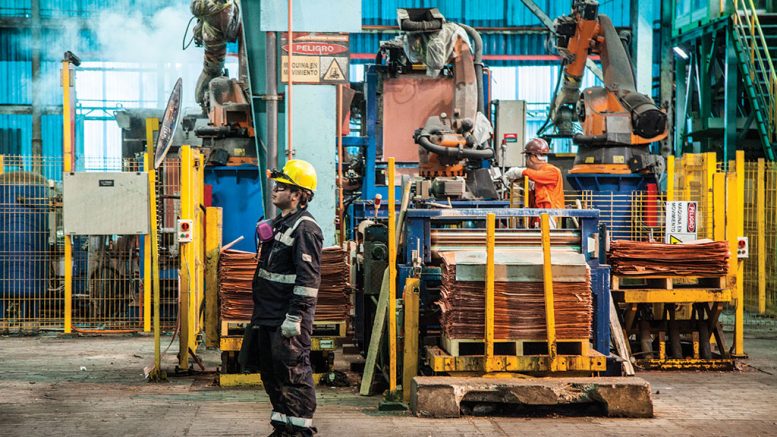
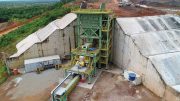
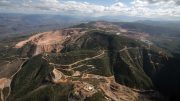
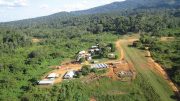
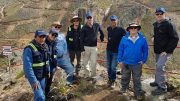
Be the first to comment on "Chile’s claims conundrum"